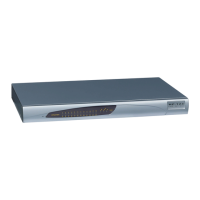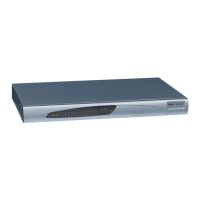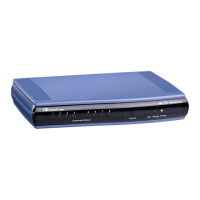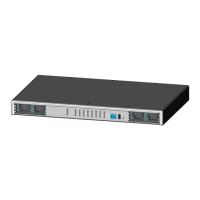Mediant 1000 Analog & Digital
Fast Track Guide 34 Document #: LTRT-83501
7.2 Updating the Auxiliary Files
The auxiliary files are configuration dat files that can be loaded to the gateway (in addition to the
ini file) to enable enhanced gateway provisioning. The 'Auxiliary Files' screen allows you to load
these files without having to load the
cmp file (as is mandatory when using the Software Upgrade
Wizard). Table
7-1 presents a brief description of the ini file and each auxiliary file.
Table 7-1: ini and Auxiliary Files Descriptions
File Type Description
Ini
Provisions the Mediant 1000 parameters. The Embedded Web Server enables
practically full device provisioning, but customers may occasionally require new
feature configuration parameters in which case this file is loaded.
Note that loading the
ini file only provisions parameters that are contained in the ini
file. If a parameter is not specified in the
ini file, values associated with that parameter
are reset to a default value. These values may not be the same as the values that
were configured for the VoIP gateway at the time of manufacture.
Note: After the file has completed loading, the VoIP gateway automatically restarts
(software is loaded from the flash).
Coefficient (Only applicable for analog interfaces.) This file (different file for FXS and FXO
modules), contains the telephony interface configuration information for the VoIP
gateway. This information includes telephony interface characteristics such as DC
and AC impedance, feeding current, and ringing voltage. This file is specific to the
type of telephony interface that the VoIP gateway supports. In most cases you have
to load this type of file.
CAS (Only applicable for digital interfaces.) Up to eight different CAS files containing
specific CAS protocol definitions.
These files are provided by AudioCodes to support various types of CAS signaling.
Voice Prompts The voice announcement file contains a set of Voice Prompts to be played by the
Mediant 1000 during operation on Call Agent request.
Call Progress
Tones
This is a region-specific, telephone exchange-dependent file that contains the Call
Progress Tones levels and frequencies that the VoIP gateway uses. The default CPT
file is 'U.S.A'.
Prerecorded
Tones
The PRT file enhances the gateway’s capabilities of playing a wide range of
telephone exchange tones that cannot be defined in the Call Progress Tones file.
User Information The User Information file maps PBX extensions to IP numbers. This file can be used
to represent PBX extensions as IP phones in the global ‘IP world’.
¾ To load an auxiliary file, take these 6 steps:
1. Open the ‘Auxiliary Files’ screen (Software Update menu > Load Auxiliary Files); the
‘Auxiliary Files’ screen is displayed (shown in Figure
7-6).
2. Click the Browse button corresponding to the type of file that you want to load.
3. Navigate to the folder that contains the file you want to load.
4. Select the file, and then click Open; the name and path of the file appear in the field next to
the
Browse button.
5. Click the Send File button corresponding to the field that contains the name of the file you
want to load. Note that parameters preceded by an exclamation mark (!) are not changeable
on-the-fly and require that the device be reset (e.g., Call Progress Tones file).
6. Repeat steps 2 through 5 for each file you want to load.

